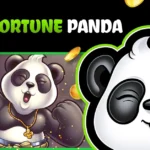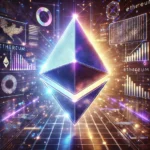近年、ゲーム業界と金融業界の境界が曖昧になりつつあり、その中でもGameFi(ゲームファイ)という新たな概念が急速に注目を集めています。GameFiは、ゲームの楽しさと金融の仕組みを組み合わせた革新的なエコシステムであり、プレイヤーに新たな収益機会と所有権の確立を提供します。本記事では、GameFiの基本からその特徴、利点、課題、代表的なプロジェクト、最新トレンド、そして今後の展望までを詳しく解説します。
GameFiとは?
GameFiは、「Game(ゲーム)」と「DeFi(分散型金融)」を組み合わせた造語で、ブロックチェーン技術を活用したゲームと金融サービスを融合させた新しいエコシステムを指します。従来のゲームでは、プレイヤーはゲームを楽しむことが主な目的でしたが、GameFiではゲームプレイを通じて暗号資産(仮想通貨)やNFT(非代替性トークン)を獲得・取引することが可能となります。これにより、エンターテインメントと金融がシームレスに結びつき、新たな収益モデルと所有権の確立が実現します。
GameFiの歴史と背景
GameFiの概念は、ブロックチェーン技術と仮想通貨の普及に伴い登場しました。以下に、その歴史的背景を簡単に振り返ります。
ブロックチェーン技術の進化
ブロックチェーン技術は、ビットコインの登場以来、様々な分野での応用が進んできました。特にEthereumの登場により、スマートコントラクトが可能となり、分散型アプリケーション(dApps)の開発が促進されました。これがGameFiの基盤となりました。
NFTの普及
2017年に登場したCryptoKittiesは、NFTを活用した最初期のブロックチェーンゲームとして注目を集めました。これにより、デジタル資産の所有権を証明する技術としてのNFTの可能性が広まりました。
DeFiの成長
DeFi(分散型金融)は、従来の金融システムを分散型技術で代替することを目指しています。これにより、金融サービスへのアクセスが民主化され、GameFiとDeFiの融合が自然な流れとして登場しました。
Play-to-Earnの概念
2020年代初頭に入ると、プレイヤーがゲームをプレイすることで暗号資産を獲得できるプレイ・トゥ・アーン(Play-to-Earn)モデルが普及し始めました。これは、GameFiの中心的なコンセプトとなり、多くのプロジェクトがこのモデルを採用するようになりました。
GameFiの主な特徴
GameFiは、従来のゲームとは異なる独自の特徴を持っています。以下に、主な特徴を詳しく解説します。
プレイ・トゥ・アーン(Play-to-Earn)モデル
GameFiの中心的なコンセプトはプレイ・トゥ・アーンです。これは、プレイヤーがゲーム内で活動することで報酬として暗号資産やNFTを獲得できる仕組みを指します。従来のゲームでは、ゲーム内アイテムやキャラクターは開発者やプラットフォームが管理していましたが、プレイ・トゥ・アーンモデルではプレイヤー自身が経済活動に参加し、実際の収益を得ることができます。
プレイ・トゥ・アーンの仕組み
- タスクと報酬: プレイヤーはクエストやバトル、ミッションをクリアすることでトークンやNFTを獲得します。
- 市場での取引: 獲得したトークンやNFTは、暗号資産取引所やマーケットプレイスで売買可能です。
- 持続可能なエコシステム: トークンエコノミーを通じて、ゲーム内の経済が持続的に成長します。
NFTの活用
NFT(非代替性トークン)は、GameFiにおいて重要な役割を果たします。ゲーム内アイテムやキャラクターがNFTとして発行されることで、これらの資産の所有権がブロックチェーン上で証明されます。これにより、プレイヤー間での自由な取引や所有権の移転が可能となり、資産の希少性や価値が維持されます。
NFTの利点
- 唯一性と希少性: 各NFTは一意であり、偽造が困難です。
- 所有権の証明: ブロックチェーン上で所有権が明確に記録されます。
- 相互運用性: 異なるプラットフォーム間での資産の移転が可能です。
DAO(分散型自治組織)
一部のGameFiプロジェクトでは、DAO(分散型自治組織)が導入されています。DAOは、プレイヤーや投資者がガバナンストークンを保有し、ゲームの運営や方向性について意思決定に参加できる仕組みです。これにより、コミュニティ主導の運営が可能となり、プレイヤーの意見が直接反映される民主的な運営が実現します。
DAOのメリット
- 透明性: 全ての意思決定がブロックチェーン上で記録され、透明性が確保されます。
- 参加型ガバナンス: プレイヤーがゲームの開発や運営に直接関与できます。
- コミュニティの強化: プレイヤー間の協力と信頼関係が深まります。
ステーキングとイールドファーミング
GameFiでは、トークンのステーキングやイールドファーミングも一般的です。これにより、プレイヤーは保有するトークンを預けることで追加の報酬を得ることができます。
ステーキングの仕組み
- トークンのロック: プレイヤーは特定の期間トークンをロックします。
- 報酬の獲得: ロック期間中に報酬として新たなトークンが付与されます。
- エコシステムへの貢献: ステーキングはネットワークの安定性やセキュリティに貢献します。
GameFiの利点
GameFiは、従来のゲームとは異なる多くの利点を提供します。以下に主な利点を詳しく説明します。
収益機会の拡大
GameFiは、プレイヤーに新たな収益機会を提供します。プレイヤーはゲームを楽しみながら、暗号資産やNFTを獲得し、これを売買することで実際の収益を得ることができます。特に、経済的な機会が限られた地域のプレイヤーにとって、GameFiは重要な収入源となる可能性があります。
具体例
- Axie Infinityでは、プレイヤーがAxieを育成・バトルさせることで、SLP(Smooth Love Potion)というトークンを獲得し、これを市場で販売できます。
- Splinterlandsでは、カードゲームをプレイすることでカードをNFTとして獲得・売買できます。
所有権の明確化
NFT技術により、ゲーム内資産の所有権が明確化されます。これにより、プレイヤーは自分の所有するアイテムやキャラクターを自由に取引・売買できるようになり、資産の価値を最大限に活用することが可能です。また、所有権がブロックチェーン上で証明されるため、不正なコピーや偽造のリスクが低減されます。
所有権の具体的なメリット
- 資産の流動性: ゲーム内資産を他のプレイヤーと自由に取引できます。
- 価値の保持: 購入したアイテムの価値が保たれ、時には上昇することもあります。
- カスタマイズと進化: 所有するアイテムをカスタマイズし、独自の価値を付加できます。
グローバルなエコシステム
ブロックチェーン技術の特性上、GameFiはグローバルなエコシステムを構築します。国境を越えたプレイヤー同士の取引や協力が容易になり、国際的なコミュニティが形成されます。これにより、多様な文化や経済背景を持つプレイヤーが共存し、より豊かなゲーム体験が提供されます。
グローバルエコシステムの利点
- 多文化交流: 異なる地域のプレイヤーとの交流が促進されます。
- 市場の拡大: グローバル市場での取引が可能となり、収益機会が拡大します。
- 多様なゲーム体験: 各国のプレイヤーが持ち寄る多様な視点やプレイスタイルがゲームを豊かにします。
ユーザーエンゲージメントの向上
GameFiは、プレイヤーが経済的なインセンティブを持つことで、ユーザーエンゲージメントを向上させます。これにより、プレイヤーはより積極的にゲームに参加し、コミュニティの活性化が促進されます。
エンゲージメント向上の具体例
- イベントの開催: 定期的なゲーム内イベントやトーナメントがプレイヤーの参加意欲を高めます。
- 報酬システム: 活動に応じた報酬がプレイヤーのモチベーションを維持します。
- コミュニティの参加: DAOを通じたコミュニティ運営がプレイヤーの帰属意識を強化します。
GameFiの課題と懸念点
GameFiは多くの利点を持つ一方で、いくつかの課題と懸念点も存在します。これらの課題を克服することで、GameFiはより持続可能で信頼性の高いエコシステムとなるでしょう。
規制の不確実性
暗号資産やNFTに対する各国の規制がまだ確立されておらず、法的リスクが存在します。特に、金融規制や著作権法などの観点から、GameFiプロジェクトは今後の法改正に対応する必要があります。規制の不確実性は、投資家やプレイヤーにとってのリスク要因となります。
規制に関する具体的な課題
- 税制の問題: 獲得した暗号資産に対する課税が明確でない場合、プレイヤーにとって不利となる可能性があります。
- 資金洗浄対策: 規制当局は、暗号資産を利用した資金洗浄を防止するための措置を強化しています。
- 知的財産権: NFTとして発行されるゲーム内資産の著作権や使用権に関する法的問題が未解決です。
市場のボラティリティ
暗号資産の価格変動が激しいため、プレイヤーの収益が不安定になる可能性があります。収益が大きく変動することで、プレイヤーのモチベーションや投資意欲に影響を与えることが懸念されます。また、価格の急激な下落は、プロジェクト全体の信頼性にも影響を及ぼす可能性があります。
ボラティリティの具体的な影響
- 収益の不安定化: 獲得したトークンの価値が急落すると、プレイヤーの収益が減少します。
- 投資リスクの増大: プレイヤーがGameFiに投資する際のリスクが高まります。
- プロジェクトの持続性: トークン価格の下落がプロジェクトの運営資金に影響を及ぼす可能性があります。
セキュリティの懸念
ブロックチェーン技術自体は高いセキュリティを提供しますが、スマートコントラクトのバグやハッキングリスクが存在します。これにより、資産の盗難や不正取引が発生する可能性があり、プレイヤーの信頼を損なう要因となります。セキュリティ対策の強化は、GameFiプロジェクトの持続可能性にとって不可欠です。
セキュリティ対策の具体例
- スマートコントラクトの監査: 専門機関によるコード監査を定期的に実施します。
- マルチシグウォレット: 資産管理にマルチシグウォレットを採用し、セキュリティを強化します。
- バグバウンティプログラム: ホワイトハッカーに対してバグ発見の報酬を提供し、脆弱性の早期発見を促進します。
ユーザーエクスペリエンスの課題
GameFiは技術的に高度な仕組みを持つため、一般ユーザーにとってのアクセス障壁が存在します。特に、ブロックチェーンや暗号資産に不慣れなユーザーにとっては、ウォレットの設定やトランザクションの理解が難しい場合があります。これにより、ユーザーエクスペリエンスが低下し、普及の妨げとなる可能性があります。
UX向上のための具体的な施策
- 直感的なUI/UXデザイン: ユーザーが簡単に操作できるインターフェースを提供します。
- 教育コンテンツの充実: ブロックチェーンや暗号資産の基本を学べるガイドやチュートリアルを提供します。
- カスタマーサポートの強化: ユーザーの疑問や問題に迅速に対応できるサポート体制を整えます。
代表的なGameFiプロジェクト
GameFiのエコシステムには、多くの革新的なプロジェクトが存在します。以下に、代表的なプロジェクトを紹介します。
Axie Infinity(アクシー・インフィニティ)
Axie Infinityは、プレイヤーが「Axie」と呼ばれるデジタルペットを育成・バトルさせるゲームです。各AxieはNFTとして発行されており、プレイヤーはこれを売買することで収益を得ることができます。また、Axie Infinityはプレイ・トゥ・アーンモデルを採用しており、積極的なユーザー参加を促進しています。
主な特徴
- 育成とバトル: Axieを育成し、他のプレイヤーとバトルさせることで報酬を獲得します。
- Marketplace: プレイヤー間でAxieやゲーム内アイテムを自由に取引できます。
- AXSトークン: ゲーム内のガバナンスや報酬として使用されるトークンです。
成功要因
- コミュニティの強化: プレイヤーコミュニティが活発で、継続的な参加を促進しています。
- 経済モデルの持続可能性: トークンエコノミーがしっかりと設計されており、持続的な成長が可能です。
Decentraland(ディセントラランド)
Decentralandは、仮想現実の世界で土地やアイテムをNFTとして所有・取引できるプラットフォームです。プレイヤーは自分の土地を開発したり、他のプレイヤーと協力してイベントを開催したりすることができます。Decentralandは、メタバースとGameFiを融合させた代表的なプロジェクトとして注目されています。
主な特徴
- 土地の所有: LANDと呼ばれる仮想土地を購入・所有し、自由に開発できます。
- カスタマイズ可能なアセット: 建物やアート作品など、自由にカスタマイズ可能なアセットを作成・販売できます。
- イベントの開催: コンサートや展示会など、さまざまなイベントを仮想空間で開催できます。
成功要因
- クリエイターの参加: 多くのクリエイターや開発者が参加し、多様なコンテンツが提供されています。
- エコシステムの拡大: 多様なパートナーシップやコラボレーションにより、エコシステムが拡大しています。
The Sandbox(ザ・サンドボックス)
The Sandboxは、ユーザーが自由に土地を購入・開発し、独自のゲームや体験を作成・共有できる仮想世界です。NFTを活用してアイテムやアセットを所有・取引できる点が特徴です。
主な特徴
- VoxEdit: ユーザーが3Dアセットを作成・編集できるツールです。
- Game Maker: プログラミング不要でゲームを作成できるツールです。
- Marketplace: ユーザー間でアセットや土地を取引できるマーケットプレイスがあります。
成功要因
- ユーザー生成コンテンツ: プレイヤー自身がコンテンツを作成・提供することで、多様なゲーム体験が可能です。
- パートナーシップ: 有名ブランドやクリエイターとの提携により、魅力的なコンテンツが増加しています。
Illuvium(イルルヴィウム)
Illuviumは、オープンワールドのRPGとバトルシステムを組み合わせたGameFiプロジェクトです。美麗なグラフィックと高度なゲームプレイが特徴で、プレイヤーは「Illuvials」と呼ばれるクリーチャーを収集・育成・バトルさせることができます。
主な特徴
- オープンワールド: 広大な仮想世界を自由に探索できます。
- クロスチェーン対応: 複数のブロックチェーンに対応し、資産の相互運用性を高めています。
- 高度なバトルシステム: 戦略性の高いバトルシステムがプレイヤーを魅了します。
成功要因
- 高品質なゲーム体験: 美麗なグラフィックと高度なゲームデザインが多くのプレイヤーを引き付けています。
- コミュニティの支援: 積極的なコミュニティ支援により、プロジェクトの成長を支えています。
最新のGameFiトレンド
GameFiは急速に進化しており、最新のトレンドが次々と登場しています。以下に、現在注目されている主要なトレンドを紹介します。
メタバースとの統合
メタバースは、仮想現実と拡張現実を組み合わせた持続可能な仮想空間を指します。GameFiプロジェクトは、メタバースと統合することで、より没入感のあるゲーム体験を提供しています。
メタバース統合の具体例
- バーチャルリアリティ: VRデバイスを活用し、リアルなゲーム体験を提供。
- ソーシャルインタラクション: プレイヤー間のコミュニケーションやコラボレーションを強化。
- 経済活動の拡大: 仮想空間内でのビジネスや取引が可能となり、経済活動が活発化。
クロスチェーン対応
異なるブロックチェーン間での資産やデータの相互運用性が向上しています。これにより、プレイヤーは複数のゲームやプラットフォームを横断して資産を活用できるようになります。
クロスチェーンの利点
- 資産の流動性向上: 異なるブロックチェーン間での資産移動が容易になります。
- 技術的柔軟性: 各ブロックチェーンの強みを活かした運用が可能となります。
- ユーザー体験の向上: プレイヤーが一つのエコシステムに縛られず、自由に移動できるようになります。
エコシステムの多様化
GameFiプロジェクトは、ゲーム以外のエコシステムとも連携し、多様なサービスを提供しています。これにより、プレイヤーはゲーム以外の活動を通じても収益を得ることが可能となります。
多様化の具体例
- デジタルアート: ゲーム内で作成されたアート作品をNFTとして販売。
- 教育プラットフォーム: ゲームを通じてブロックチェーンや暗号資産の知識を学ぶ教育コンテンツの提供。
- エンターテインメント: 仮想ライブイベントやコンサートの開催。
AIとの融合
人工知能(AI)との融合により、より高度なゲーム体験が提供されています。AIはゲームのデザイン、プレイヤーの行動分析、カスタマイズされたコンテンツの提供など、様々な面で活用されています。
AI融合の具体例
- スマートNPC: AIを活用した高度な非プレイヤーキャラクター(NPC)がリアルなインタラクションを提供。
- 動的ストーリーテリング: プレイヤーの選択に応じて変化する動的なストーリーライン。
- パーソナライズドコンテンツ: プレイヤーの嗜好に合わせたカスタマイズされたゲームコンテンツの提供。
GameFiの将来展望
GameFiは、今後も急速に進化し、ゲーム業界と金融業界のさらなる融合が期待されています。以下に、GameFiの将来展望を詳しく解説します。
インターオペラビリティの向上
異なるGameFiプロジェクト間での資産やデータの連携が進み、プレイヤーは複数のゲームを横断して資産を活用できるようになります。これにより、エコシステム全体の一体感が増し、プレイヤーにとっての利便性が向上します。
インターオペラビリティの具体的な利点
- 資産の統合管理: 複数のゲーム間で資産を一元管理できます。
- クロスゲームクエスト: 異なるゲーム間での共同クエストやイベントが可能になります。
- ユーザー基盤の拡大: 各ゲームのユーザーが相互に参加し、エコシステム全体の活性化が促進されます。
規制対応の強化
各国の規制に対応するための仕組みや標準が整備され、法的リスクが軽減されることで、信頼性が向上します。これにより、GameFiプロジェクトはより多くの投資家やプレイヤーを引き付けることが可能となります。
規制対応の具体的な施策
- 法務チームの強化: 専門の法務チームを設置し、最新の規制に対応。
- コンプライアンスの確立: 国際的な規制基準に準拠した運営を確立。
- 透明性の向上: プロジェクトの運営や資金の流れを透明化し、規制当局との信頼関係を構築。
新たな収益モデルの創出
ゲーム内広告やスポンサーシップ、サブスクリプションモデルなど、従来の収益手段に加えて多様な収益モデルが登場します。これにより、プロジェクトは安定した収益基盤を構築できます。
新収益モデルの具体例
- サブスクリプションサービス: プレミアムコンテンツや特典を提供する有料会員制度。
- 広告収入: ゲーム内でのブランド広告やスポンサーシップの導入。
- トークンエコノミー: ゲーム内のトークンを活用した多様な収益機会の提供。
持続可能なエコシステムの構築
持続可能なエコシステムを構築するためには、トークンエコノミーのバランスを保ち、インフレやデフレのリスクを管理する必要があります。また、コミュニティの活性化と技術の進化を継続的に推進することが重要です。
持続可能性のための具体的施策
- トークンの発行量管理: トークンの発行量を制御し、価格の安定を図る。
- コミュニティインセンティブ: コミュニティの参加を促進するインセンティブプログラムの導入。
- 技術革新の推進: 新技術の採用や開発を通じて、エコシステムの競争力を維持。
GameFiの成功事例と失敗事例
GameFiのエコシステムには、多くの成功事例とともに失敗事例も存在します。これらの事例から学ぶことで、GameFiプロジェクトの運営や戦略に役立てることができます。
成功事例:Axie Infinity
Axie Infinityは、GameFiの代表的な成功事例です。プレイヤーがAxieを育成・バトルさせることで報酬を得るプレイ・トゥ・アーンモデルを採用し、急速に成長しました。
成功要因
- コミュニティの強化: プレイヤーコミュニティが非常に活発で、継続的な参加を促進。
- 経済モデルの持続可能性: トークンエコノミーがしっかりと設計されており、持続的な成長が可能。
- ユーザーエクスペリエンスの向上: ゲームプレイの楽しさと収益機会のバランスが取れている。
失敗事例:PlayDapp
PlayDappは、GameFiプロジェクトとしてスタートしましたが、期待された成長を遂げることができませんでした。以下にその失敗要因を分析します。
失敗要因
- 市場競争の激化: 多くの競合プロジェクトが登場し、差別化が難しかった。
- トークンエコノミーの不備: トークンの価値が安定せず、プレイヤーの収益が不安定。
- ユーザーエクスペリエンスの不足: 操作が複雑で、一般ユーザーにとっての敷居が高かった。
まとめ
GameFiは、ゲームを単なる娯楽から経済活動の一部へと変革する可能性を秘めています。プレイヤーに新たな収益機会を提供すると同時に、所有権や取引の透明性を高めることで、ゲーム業界に新たな価値を創出しています。さらに、メタバースとの統合やAIとの融合など、技術の進化とともにGameFiはますます多様化し、成長しています。
しかし、技術的・法的な課題も存在するため、今後の発展にはこれらの問題への対応が重要となります。規制対応の強化、セキュリティ対策の徹底、ユーザーエクスペリエンスの向上など、持続可能なエコシステムを構築するための取り組みが求められます。
GameFiの成功は、ブロックチェーン技術のさらなる進化と、ユーザーエクスペリエンスの向上、そして規制対応の確立にかかっています。これらの要素が整うことで、GameFiはゲーム業界と金融業界の新たなパラダイムとして定着し、未来のデジタルエコノミーを牽引する存在となるでしょう。



